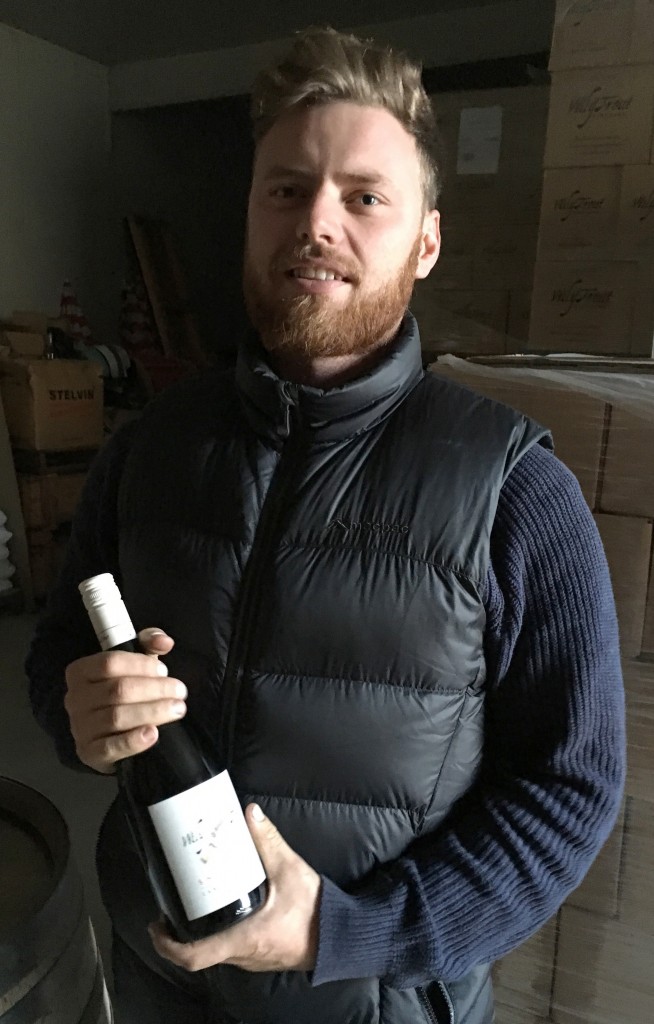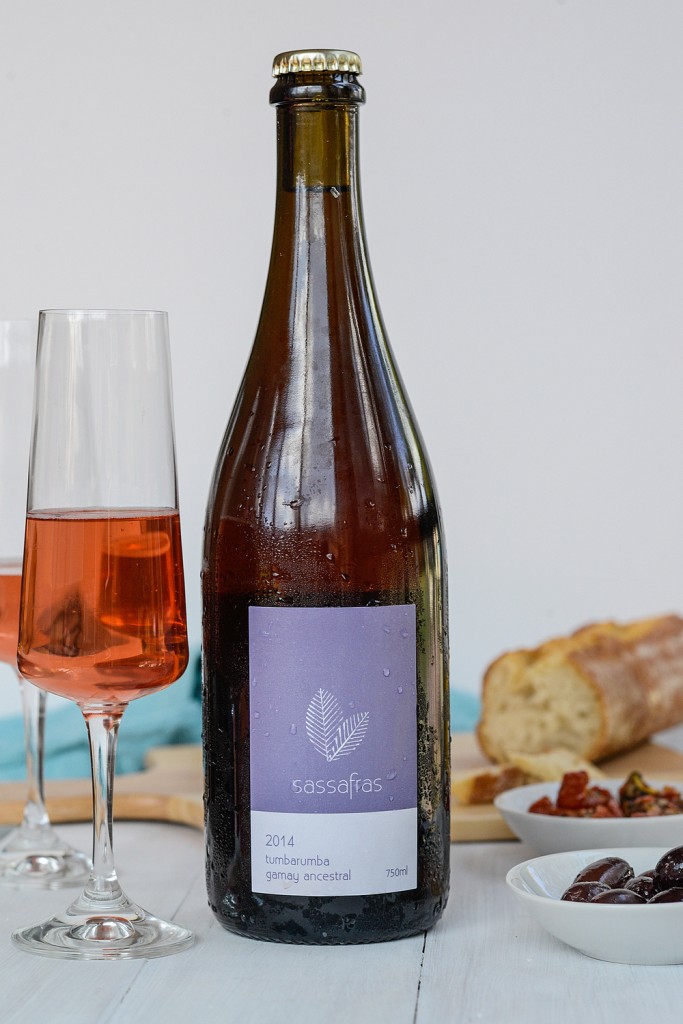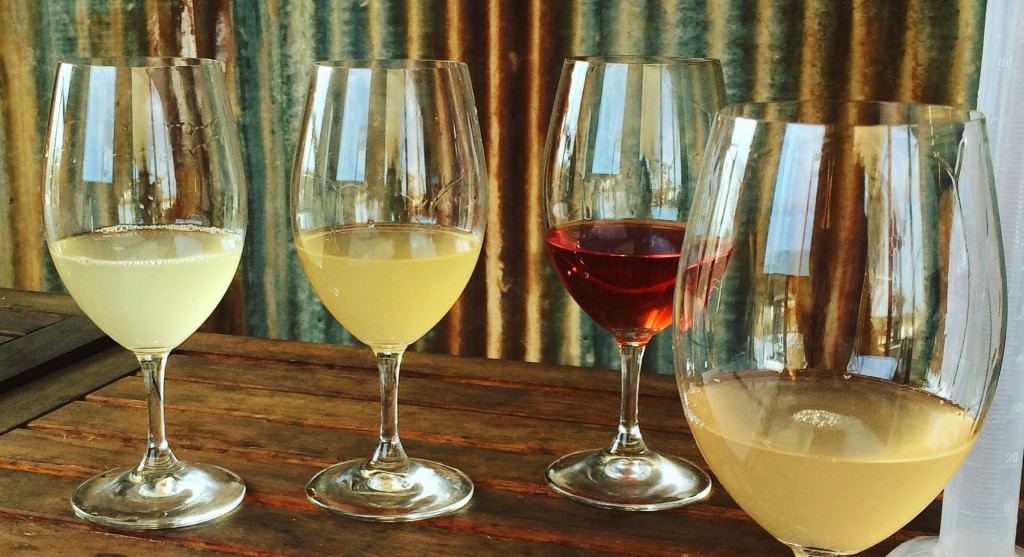Canberra’s 2015 vintage produced sensational reds, perhaps the best in the district’s history. The quality – now in the glass for all to enjoy – justifies the superlatives sprinkled around like water at harvest time last year.
At Lerida Estate, Lake George, Malcolm Burdett says, “It’s the best ever. Better than the 2013”. Greg Gallagher, Gallagher Wines, Murrumbateman, agrees. At harvest last year he said, “I think this is the best vintage I’ve done in this district”. A year on, with his 2015 reds bottled (but not released) he’s calling them “perfect”, a result of ripening conditions from mid-January to late March being “fantastic”.
At Hall, Alan Pankhurst rated it “a bit better than 2013”, while at Murrumbateman Ken Helm declared, “It has outdone even 2013. It ticked every box and is the best across all varieties. If we get a better vintage than this, I’ll be very, very surprised. It’s a cracker”.
More expansively, but in a similar vein, Mount Majura’s Frank van de Loo writes, “[2015] probably was my best vintage ever, certainly exceptionally good – we had fairly mild conditions through summer, a bit more humid and cloudy than we otherwise like, but then fine and mild as we got to vintage, which seems a pretty magic combination”.
At the end of harvest last year, Alex McKay (Collector Wines) said, “ [outstanding quality] is most obvious in the reds, though there’s a lot of good riesling. The best vintage to date has been 2013. But 2015 is up there and may be better”.
Winemaker Nick O’Leary explained how elements of the outstanding season translated into great wine. Healthy vine canopies, resulting from adequate ground moisture and mild temperatures, produced healthy, plump, juicy, properly ripened grapes with no signs of shrivel. In turn this meant generally trouble-free, complete ferments.
Those healthy, properly ripened red grapes delivered harmonious reds with vivid colours, vibrant varietal flavours, ripe tannins and fresh acidity.
While no vintage proves to be all good or all bad (though I’ve yet to see a dud 2015) benign seasons produce a high average quality as well as great highlights. The good years also mean that even the simpler, early release, drink-now reds offer richer fruit and superior all-round drinking satisfaction
A good example is the juicy, drink-now Yarrh Mr Natural Shiraz 2015 ($25). Winemaker Fiona Wholohan says, “Making a wine like this needs perfect fruit” and doubts she could make it at all in lesser seasons. She simply de-stemmed and crushed the grapes to tank, and then let nature takes its course. There were no additions (such as yeast nutrient, tannin or acid) other than sulphur dioxide, an essential preservative, at bottling. You cannot do that with such delicious results without perfect grapes.
Comparably juicy flavours and drink-now appeal were also part of Ravensworth’s now sold-out Sangiovese 2015 and Garnacha Tinto Y Cinq-Sao 2015 – wines capable also of some cellaring. Also sold out is Ravensworth Hilltops Nebbiolo 2015, an elegant, lovable, and probably long-lived expression of this Piedmont variety. We enjoyed a bottle recently at Temporada – indicating that some of the sold-out wines may still be in restaurants or bottle shops.
However, most of the 2015s are either in the market now or being held back by the makers for later release. Tastings in the winery and on the Chateau Shanahan bench left no doubt about their sizzling quality.
Style for any variety varies across the district, partly because of vineyard site and management, but also through winemaker inputs such as whether they include stems in the ferment or variations in oak-maturation regime.
But there is a vintage style – like a fine-tuning of the almost perfect 2013s. These remain some of the best wines made in the district, noted for ripe fruit, assertive tannin structure and potential for the best to age gracefully for many years.
The 2015s emphasise the ripe fruit flavours more, while retaining mouth-caressing ripe tannins, but not the assertiveness of the 2013s. The result is simply irresistible, satisfying drinking from wines destined to rise to the top wherever they show up in Australia’s wine show circuit.
Shiraz and shiraz-viognier blends, Canberra’s specialty, lead the way. But the vintage also produced notable tempranillo, sangiovese, merlot, pinot noir and nebbiolo among the wines tasted to date – and there are many more yet to come.
The 2015s provide a great buying opportunity for wine drinkers to explore the Canberra District’s deeply flavoured, medium bodied style at its best. Many of the wines are already in the market. Others are due for release either late this year in the first half of 2017. The wines reviewed below are all from the Canberra District, with the exception of Ravensworth nebbiolo, sourced from the neighbouring Hilltops region.
CURRENTLY AVAILABLE 2015 REDS
Shiraz and shiraz-viognier
Nick O’Leary Shiraz 2015 $25
Seductively fragrant and floral, with spice and soy-like savour.
Nick O’Leary Bolero Shiraz 2015 $55
Deep and savoury with concentrated fruit, power and elegance. Superior quality.
Yarrh Mr Natural Shiraz 2015 $25
Delicious and juicy. Drink it up – slurp, slurp.
McKellar Ridge Shiraz Viognier 2015
Round, plush and seductive, the palate ripples with vibrant, ripe-berry flavours. Gold medalist in the Royal Queensland and NSW Small Winemakers shows.
Four Winds Vineyard Shiraz 2015 $30
Typical Canberra red fruits and spice flavours, plush and lovely.
Lerida Estate Shiraz 2015 $26.50
Fragrant and fruity, with Canberra spice and slightly firmer tannic bite distinctive of this vineyard.
Lerida Estate Shiraz Viognier 2015 $85
More powerful and brooding that Lerida’s straight shiraz, backed by quite firm tannins. Should cellar well.
Ravensworth Shiraz Viognier 2015 $36
Buoyant, lively and exciting, combining fruit, savour and substantial though silky structure. One of the best.
Clonakilla Shiraz Viognier 2015 $96
Sensational and still the district’s finest. Shows more stemmy character than usual (from inclusion of whole bunches in the ferment) but this is a positive both for flavour and smooth texture in a wine of this calibre.
Pinot Noir
Long Rail Gully Murrumbateman Pinot Noir 2015
A lovely pinot, showing fragrant fruit and the complexity of whole-bunch ferments. Great to drink now and over the next four or five years.
Lerida Estate Lake George Pinot Noir 2015 $26.50
A world apart from the Long Rail Gully style, nice fruit underling the assertive tannin structure. Not your typical Australian pinot.
Lerida Estate Cullerin Lake George Pinot Noir 2015 $35
Like a concentrated version of the entry-level pinot, fruit and tannin multiplied. The tannin structure is reminiscent of Burgundy, not Australia.
Other varieties
Four Winds Vineyard Sangiovese 2015 $30
A lighter, juicy version of this Italian variety, with fine, savoury tannins.
Mount Majura Tempranillo 2015 $45
A wine of exceptional flavour depth, displaying tempranillo’s distinctive, pervasive tannins. Take a bow Frank van de Loo, this could be Canberra’s next red specialty after shiraz.
Mount Majura TSG 2015 $34
This blend of tempranillo, shiraz and graciano, thrills with its vivid purple colour, sweet, seductive aroma and vibrant, harmonious palate.
Lerida Estate Georgianus 2015 $16.50
A pot-pourri of leftovers blended to give affordable medium-bodied drinking with Lerida’s distinctive firm tannins.
Lerida Estate Merlot Cabernet Franc 2015 $26.50
Lerida’s local take on St Emillion’s classic blend shows the true power and tannic muscle of merlot in a good season. Needs time.
TASTED AND LOVED BUT NOT YET RELEASED
Mount Majura Shiraz 2015 $34 – for release November 2016
A winner of gold medals at the NSW Small Winemakers Show and Winewise Small Vignerons. Demonstrates the immense appeal of the vintage.
Collector Rose Red City 2015 $32 – for release April 2017
Alex McKay’s blend of sangiovese and other Italian varieties provides spice, savour and red-currant-like flavours with taut, drying tannins.
Collector Marked Tree Shiraz 2015 $28 – for release April 2017)
A less fleshy style, showing pepper, spice, and whole-bunch character, combined with red-berry flavour and grippy, savoury finish.
Collector Reserve Shiraz 2015 $58 – for release April 2017)
An impressive, multi-dimensional wine featuring ripe, dark-cherry like fruit, spice, and soy-like savour. Taut structure and chewy richness make this one of the best.
Wily Trout Shiraz 2015 $28 – for release early 2017
Irresistibly ripe, plush and lovely, this wine elevates Wily Trout from bronze-medal to gold-medal standard.
Four Winds Vineyard Tom’s Block Shiraz 2015 $75 – for release March 2017
Earth, spice, fruit and oak saturate the palate of an exceptional shiraz.
Clonakilla O’Riada Shiraz 2015 $36 – for release late 2016 or early 2017
A fragrant wine offering berry, spice and a gentle, understated but gorgeous drinking.
Clonakilla Syrah 2015 barrel sample – for release April 2017
It’s not even bottled yet but shows an Hermitage-like rivalry for Clonakilla’s flagship shiraz–viognier blend. Extraordinary fruit flavours.
Gallagher Shiraz 2015 $30 – for release late 2016 or early 2017
A distinctive shiraz showing the juicy richness of the vintage with intense black-pepper like flavour of cool-grown shiraz. Seductive.
Gallagher Merlot 2015 $25 – for release late 2016 or early 2017
An earthy, densely flavoured wine with merlot’s persistent, grippy tannins.
TASTED AND LOVED, BUT SOLD OUT AT THE WINERY
Though sold out at the winery, these wines may be still be around in restaurants or retail shelves.
Ravensworth Hilltops Nebbiolo 2015 $28
Ravensworth Estate Sangiovese 2015 $36
Ravensworth Garnacha Tinto Y Cinq-Sao 2015 $32
Copyright © Chris Shanahan 2016
First published 11 October 2016 in the Canberra Times and CT app
























